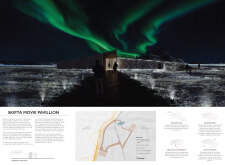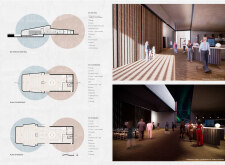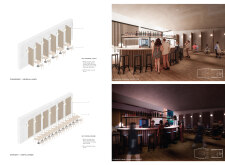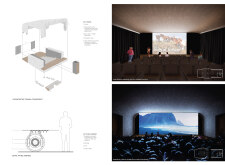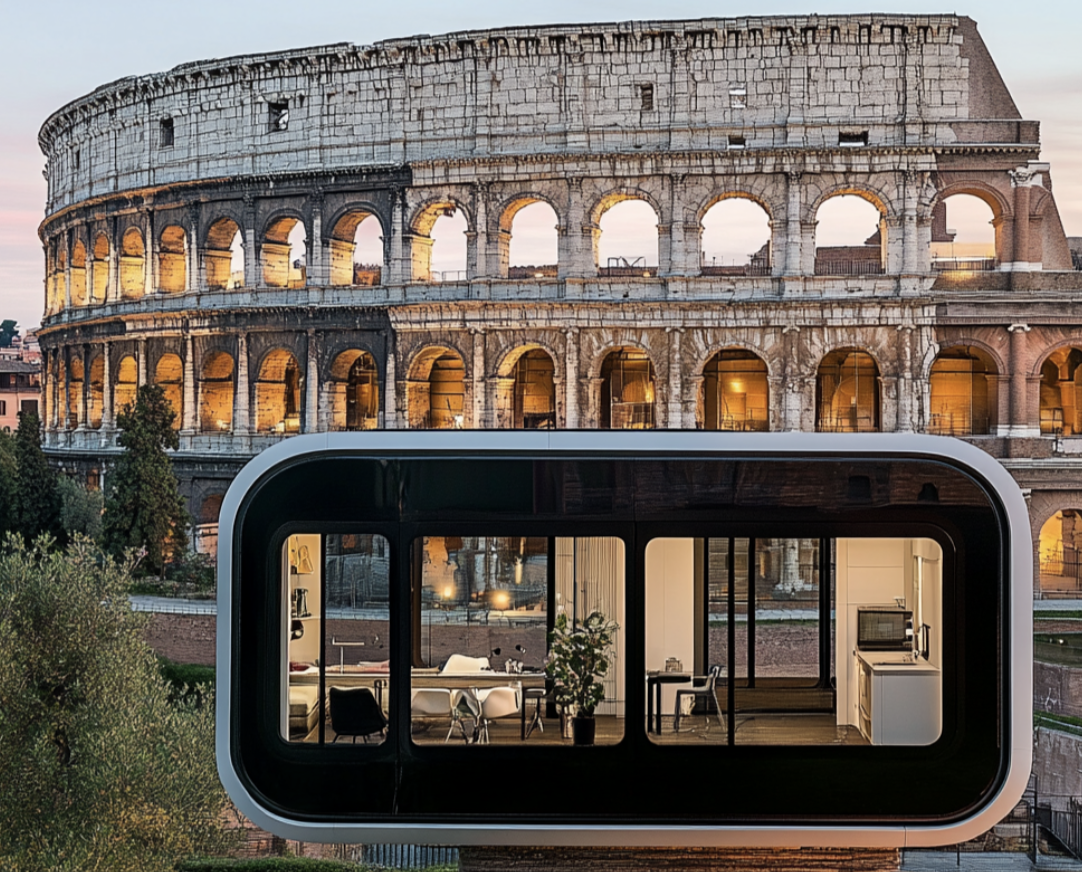5 key facts about this project
The Skipta Movie Pavilion is an architectural project situated in Northern Iceland, designed as a space for film screenings that harmonizes with its natural surroundings. The pavilion aims to enhance the cinematic experience by immersing users in the unparalleled landscapes typical of the region, particularly during displays of the aurora borealis. This project integrates the elements of architecture, culture, and nature into a cohesive structure that serves both functional and aesthetic purposes.
The pavilion operates primarily as a cinema, featuring flexible spaces that can accommodate various screening formats and community gatherings. It is designed to foster social interaction and cultural exchange while promoting an appreciation for both film and the striking Icelandic environment. The architecture embodies themes of convergence, drawing parallels between the tectonic activity that defines Iceland's landscape and the collective experience of cinema.
Architectural Form and Material Selection
The design of the Skipta Movie Pavilion features undulating forms inspired by Iceland’s geological characteristics. This organic architectural approach reflects the natural contours of the landscape, creating a seamless connection between the built environment and its surroundings. The exterior is primarily constructed from reinforced concrete, chosen for its durability and acoustic properties. This material selection also allows for sculptural expressions in design, creating a visually interesting profile that blends into the topography.
The interior spaces utilize Nordic spruce, adding warmth and texture to the environment. Glass elements are incorporated throughout the design, allowing natural light to flood the space and providing unobstructed views of the scenic backdrop. This transparency reinforces the connection between the pavilion and its setting, ensuring that the natural landscape remains a focal point during film presentations.
Acoustic Design and Community Engagement
An important aspect of the Skipta Movie Pavilion is its focus on acoustic performance. The auditorium features kinetic acoustic panels, which adapt to optimize sound quality based on the type of screening. This innovative approach to sound design not only enhances the viewing experience but also minimizes noise disturbance in the surrounding area, allowing for respectful coexistence with nature.
The pavilion's layout promotes community gathering through open and flexible spaces. Areas within the building are designed to accommodate informal interactions, as well as formal events, creating a versatile venue that meets the needs of various user groups. The incorporation of paths that lead visitors through the structure underscores the importance of exploration and interaction within architectural design.
The Skipta Movie Pavilion stands as an integration of cinema, architecture, and the Icelandic landscape. Its thoughtful approach to form, materiality, and acoustic design distinguishes it from conventional cinema spaces, emphasizing the relationship between the built environment and its natural context. For a more in-depth look at the architectural ideas that inform this project, readers are encouraged to explore the detailed architectural plans, sections, and designs that provide further insight into its conceptual underpinnings.



